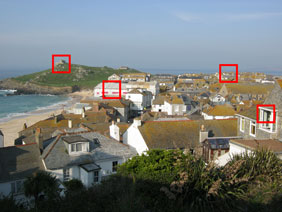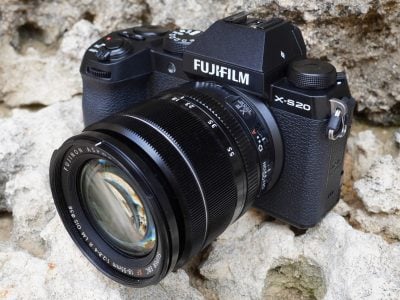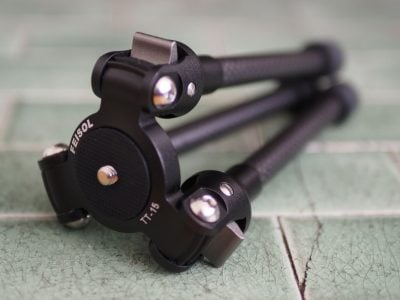Canon PowerShot A800
-
-
Written by Gordon Laing
Quality
Canon PowerShot A800 vs Canon PowerShot A1200 vs Nikon COOLPIX L24 Real-life resolution
Canon PowerShot A800 results : Real-life resolution / High ISO Noise
Canon PowerShot A800 |
Canon PowerShot A1200 |
Nikon COOLPIX L24 | ||
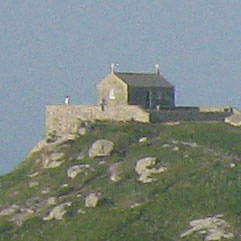 | 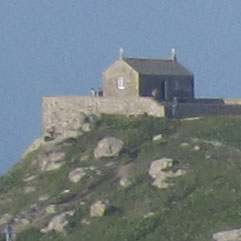 | 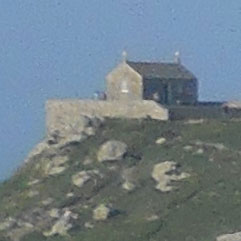 | ||
f9, 100 ISO |
f3.5, 80 ISO |
f5.5, 80 ISO | ||
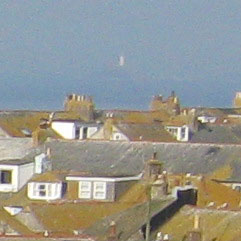 | 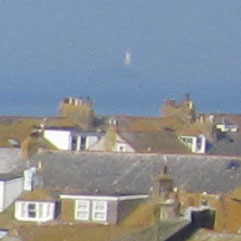 | 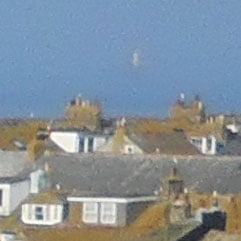 | ||
f9, 100 ISO |
f3.5, 80 ISO |
f5.5, 80 ISO | ||
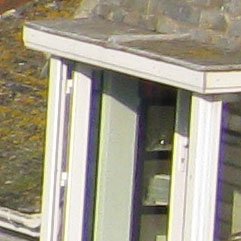 | 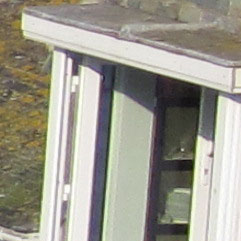 | 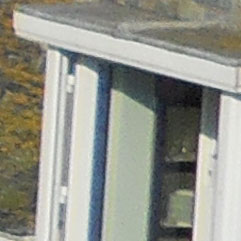 | ||
f9, 100 ISO |
f3.5, 80 ISO |
f5.5, 80 ISO | ||
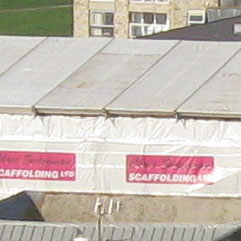 | 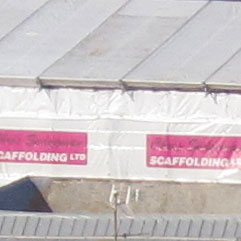 | 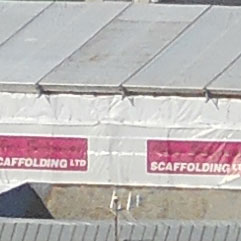 | ||
f9, 100 ISO |
f3.5, 80 ISO |
f5.5, 80 ISO |
Canon PowerShot A800 results : Real-life resolution / High ISO Noise
The ISO sensitivity on the two Powershot compacts was set to the lowest available setting – 100 ISO on the PowerShot A800 and 80 ISO on the PowerShot A1200. The Nikon COOLPIX doesn’t allow manual setting of the ISO sensistivity but, in the bright sunny conditions automatically selected 80 ISO. The above image was taken with the Canon PowerShot A800. The lens was set to its maximum wide angle setting of 6.6mm (37mm equivalent) and the metering selected an exposure of 1/200 at f9 with the sensitivity at 100 ISO. The original 3648 x 2736 pixel image had a file size of 3MB. The crops are taken from the areas marked with red rectangles and are presented here at 100%. Overall, the PowerShot A800 has done a great job of capturing our test scene. The exposure is spot on, colours are bright and well saturated and there is good tonal detail in the shadows and highlights. Looking at the whole image on screen at less than 100 percent view the image is crisp, clear and well detailed. The 100 percent crops are equally impressive. The first one shows good fine detail in the chapel, you can clearly make out a couple of people outside and the crosses on the roof are nicely delineated. There’s some noise visible in the blue sky but it isn’t serious enough to interfere with image detail. On the second crop the lighthouse isn’t as visible as it sometimes appears, but that’s due to the fact that it was quite a hazy day. Despite that, the PowerShot A800 has done a pretty good job of picking out the white cylinder of the lighthouse. The detail in the foreground of this crop is also nice and sharp too, though, once again, there’s a slighly granular look to the flat blue sky. The third crop, taken from the edge of the frame is the first sign of any real trouble, there’s quite pronounced purple fringing caused by chromatic aberration. It’s not the end of the world, though to find it on a shot like this in a fairly low contrast area of a shot taken with the sun behind the camera and at a small aperture, does raise the chances of it occuring at wider aperture settings and when shooting into the light. The fourth crop, from the centre of the image once again shows good sharp image details, an absence of noise and generally a very pleasing and natural looking result that betray no evidence of digital processing. The image detail might have been clearer still had the PowerShot A800 not opted for an aperture of f9, and the resulting diffraction that will have occurred as a result. At the wide angle lens setting, A800 frequently, though not always, selected small aperture settings in bright conditions. Be that as it may, it still produced very good results. Compared with the results from the more expensive, 12.1 Megapixel PowerShot A1200, the PowerShot A800’s 10 Megapixel images look even more impressive. The PowerShot A1200 crops are uniformly noisier and image detail is less well defined than in the PowerShot A800 crops. The A1200’s evaluative metering has selected a wider aperture than the A800, but the edge detail looks indistinct and furry by comparison. Take a look at the wall in front of the chapel, the foreground detail in the lighthouse crop and the roof slats along the bottom edge of the fourth crop. One thing both Canon compacts have in common is the chromatic lens aberration causing purple fringing at the image edges. Overall, though, we’d say the cheaper, lower resolution PowerShot A800 is a clear winner in terms of image quality here. It’s the same story, only more so, with the crops from the Nikon COOLPIX L24. The COOLPIX crops, look, it has to be said, pretty clumpy. There’s a high degree of noise present in all the crops and you don’t have to look hard, at least not with these 100 percent crops, to see it. If this is what happens when you attempt to produce a budget 14 Megapixel compact, we’d prefer to see Nikon stick with lower resolution sensors for its budget models. Now let’s see how they compare at higher sensitivities in our High ISO Noise results. | |||||||||||
Canon PowerShot A800 vs Canon PowerShot A1200 vs Nikon COOLPIX L24 High ISO Noise
Canon PowerShot A800 results : Real-life resolution / High ISO Noise
Canon PowerShot A800 results : Real-life resolution / High ISO Noise
| ||||
|
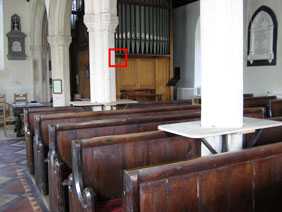 | To compare noise levels under real-life conditions we shot this scene with the Canon PowerShot A800, A1200 and Nikon COOLPIX L24 within a few moments of each other using their best quality JPEG settings, and where possible, at each of their ISO sensitivity settings. The PowerShot A800 and A1200 were set to Program mode and the COOLPIX L24 was set to auto mode. The lenses were set to approximate the same field of view. |
The ISO was manually set on the PowerShot A800 and the PowerShot A1200. ISO sensitivity can’t be set manually on the Nikon COOLPIX L24, but a series of shots taken in auto mode yielded results at ISO settings of 80 and 400 which we’ve shown here for comparison purposes.
The above shot was taken with the the Canon PowerShot A800 in Program mode with the lens at its widest angle setting of 6.6mm (37mm equivalent). The ISO sensitivity was set to 100 ISO and the exposure was quarter of a second at f3. The crops are taken from the area marked with the red square and presented below at 100%.
If you were worried that high ISO noise performance from a budget 10 Megapixel compact might not be up to the standard of more expensive models, these crops will do a lot to put your mind at rest. At the base 100 ISO sensitivity setting the PowerShot A800 turns in a very clean looking result, you’d have to look very hard indeed to find any evidence of noise in this crop. In places it does look a little smoothed and if this is the result of processing to remove noisy pixels it’s a slightly more agressive approach than we’re used to seeing on Canon compacts.
At 200 ISO the picture is still looking very promising. There’s not quite as much detail as in the first crop, but the deterioration is marginal, so you can use the 200 ISO sensitivity setting to get a faster shutter speed when you need it without worrying too much about quality loss – a useful option on a camera with no image stabilisation.
At 400 ISO, as you’d expect, the noise is starting to become intrusive. Canon’s noise suppression algorithm strikes a good balance though and despite increasing softness this is still a very useable ISO sensitivity setting. At 800 things get grainier and clumpier still, but the edge of the stone column is intact and you can see pretty good detail in the wood panelling. It’s not until you get to the final 1600 ISO setting that things start to look really grim. Both the PowerShot A800 and PowerShot A1200 have a low light scene mode that shoots 1200 x 1600 (2M) images at sensitivities of up to 3200 ISO. For our test interior both models chose 1600 ISO. If image size isn’t your main concern the Low light scene mode produces a better quality image with less noise and is well worth considering.
As was the case in our outdoors test, the crops from the Canon PowerShot A1200 show less detail than those from the PowerShot A800. The 100 ISO crop from the the PowerShot A800 looks cleaner, sharper and more detailed than the 80 ISO crop from the PowerShot A1200 which looks soft and processed by comparison. This quality disparity continues all the way up the sensitivity range and the result is that by 400 ISO the Powershot A1200 crop is both soft and grainy with the loss of moderately fine detail, while the A800 is stil producing great results. In the absence of image stabilisation, you’ll still be able to get good shots at 400 ISO with the PowerShot A800, but we’re not sure you can say the same for the PowerShot A1200.
With only two crops to compare, at 80 and 400 ISO it’s harder to make comparison with the Nikon COOLPIX L24. The 80 ISO crop shows pretty good image detail, though it’s less well exposed than the Canon crops and the colour balance has gone awry. At 400 ISO the white balance has recovered, but the noise and processing artifacts have combined to produce a poor result that could easily be mistaken for a 1600 ISO crop.
Now head over to our Canon PowerShot A800 gallery to see some more real-life shots in a variety of conditions.
Canon PowerShot A800 |
Canon PowerShot A1200 |
Nikon COOLPIX L24 | ||
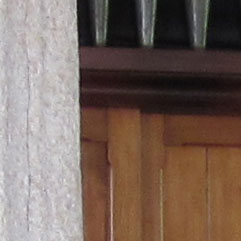 | 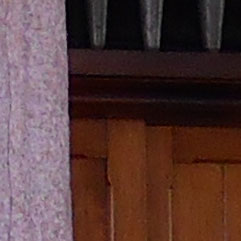 | |||
80 ISO Not available |
80 ISO |
80 ISO | ||
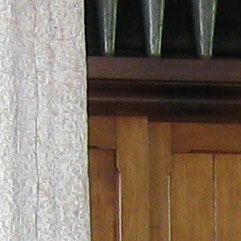 | 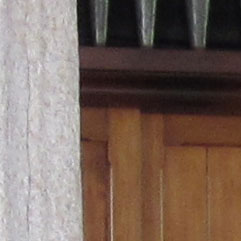 | |||
100 ISO |
100 ISO |
100 ISO not available at time of testing | ||
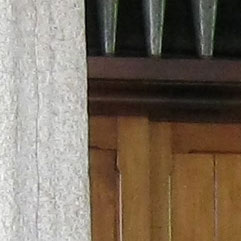 | 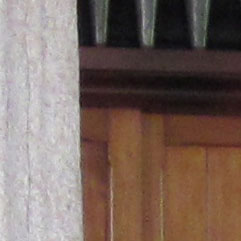 | |||
200 ISO |
200 ISO |
200 ISO not available at time of testing | ||
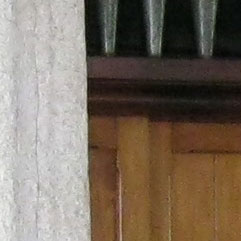 | 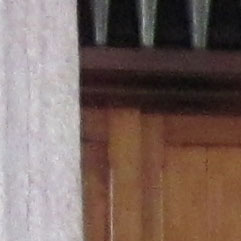 | 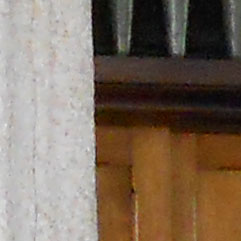 | ||
400 ISO |
400 ISO |
400 ISO | ||
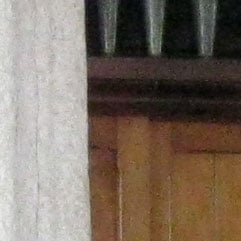 | 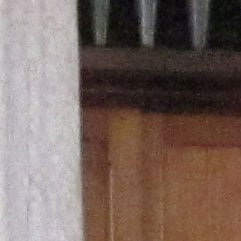 | |||
800 ISO |
800 ISO |
800 ISO not available at time of testing | ||
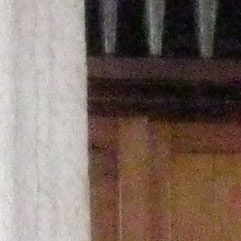 | 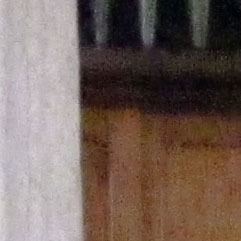 | |||
1600 ISO |
1600 ISO |
1600 ISO not available at time of testing | ||
 | 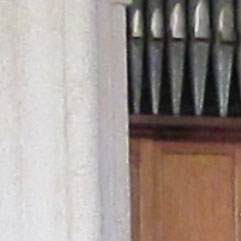 | |||
1600 ISO Low light (2M) |
1600 ISO Low light (2M) |
1600 ISO not available at time of testing |


